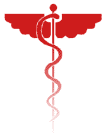 |
The LSUHSC New Orleans Presents The Student Procedure Manual |
 |
 |
The LSUHSC New Orleans Presents The Student Procedure Manual |
 |
Basic Suturing
by Charlie Clasen with
Patrick Hymel
Indications
Contraindications
Prerequisites
Equipment
Procedure
Complications
Follow-up
Suture removal
Related procedures/tests